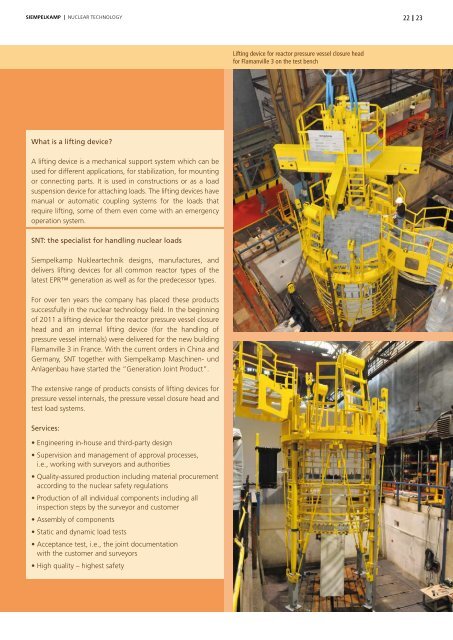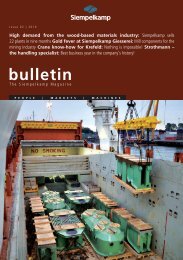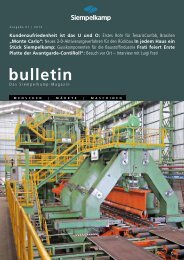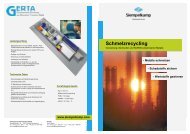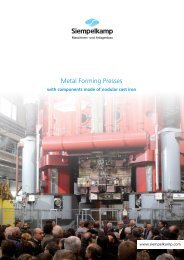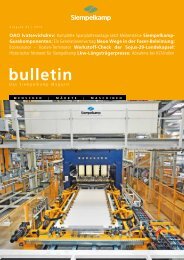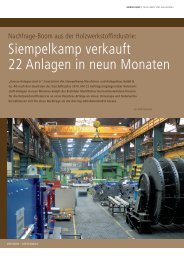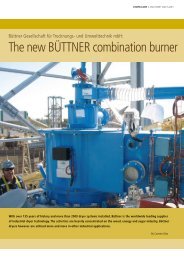Bulletin 1/2011 - Siempelkamp
Bulletin 1/2011 - Siempelkamp
Bulletin 1/2011 - Siempelkamp
Create successful ePaper yourself
Turn your PDF publications into a flip-book with our unique Google optimized e-Paper software.
SieMpelkaMp | nUCLEAR tECHnOLOGy<br />
What is a lifting device?<br />
A lifting device is a mechanical support system which can be<br />
used for different applications, for stabilization, for mounting<br />
or connecting parts. It is used in constructions or as a load<br />
suspension device for attaching loads. the lifting devices have<br />
manual or automatic coupling systems for the loads that<br />
require lifting, some of them even come with an emergency<br />
operation system.<br />
SNT: the specialist for handling nuclear loads<br />
<strong>Siempelkamp</strong> nukleartechnik designs, manufactures, and<br />
delivers lifting devices for all common reactor types of the<br />
latest EPR generation as well as for the predecessor types.<br />
For over ten years the company has placed these products<br />
successfully in the nuclear technology field. In the beginning<br />
of <strong>2011</strong> a lifting device for the reactor pressure vessel closure<br />
head and an internal lifting device (for the handling of<br />
pressure vessel internals) were delivered for the new building<br />
Flamanville 3 in France. With the current orders in China and<br />
Germany, Snt together with <strong>Siempelkamp</strong> Maschinen- und<br />
Anlagenbau have started the “Generation Joint Product”.<br />
the extensive range of products consists of lifting devices for<br />
pressure vessel internals, the pressure vessel closure head and<br />
test load systems.<br />
Services:<br />
• Engineering in-house and third-party design<br />
• Supervision and management of approval processes,<br />
i.e., working with surveyors and authorities<br />
• Quality-assured production including material procurement<br />
according to the nuclear safety regulations<br />
• Production of all individual components including all<br />
inspection steps by the surveyor and customer<br />
• Assembly of components<br />
• Static and dynamic load tests<br />
• Acceptance test, i.e., the joint documentation<br />
with the customer and surveyors<br />
• High quality – highest safety<br />
Lifting device for reactor pressure vessel closure head<br />
for Flamanville 3 on the test bench<br />
22<br />
23


